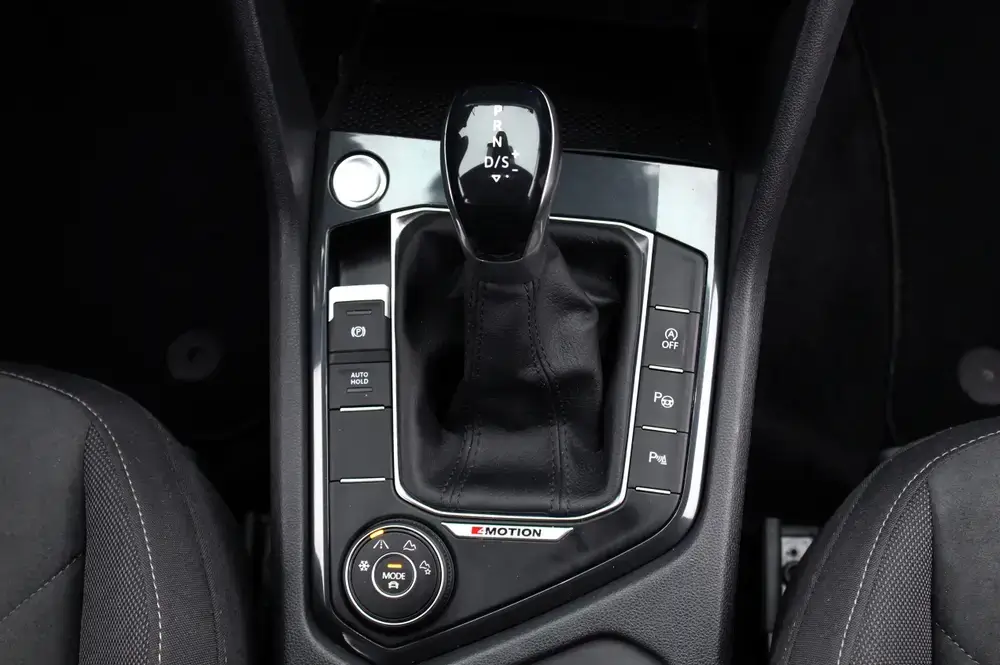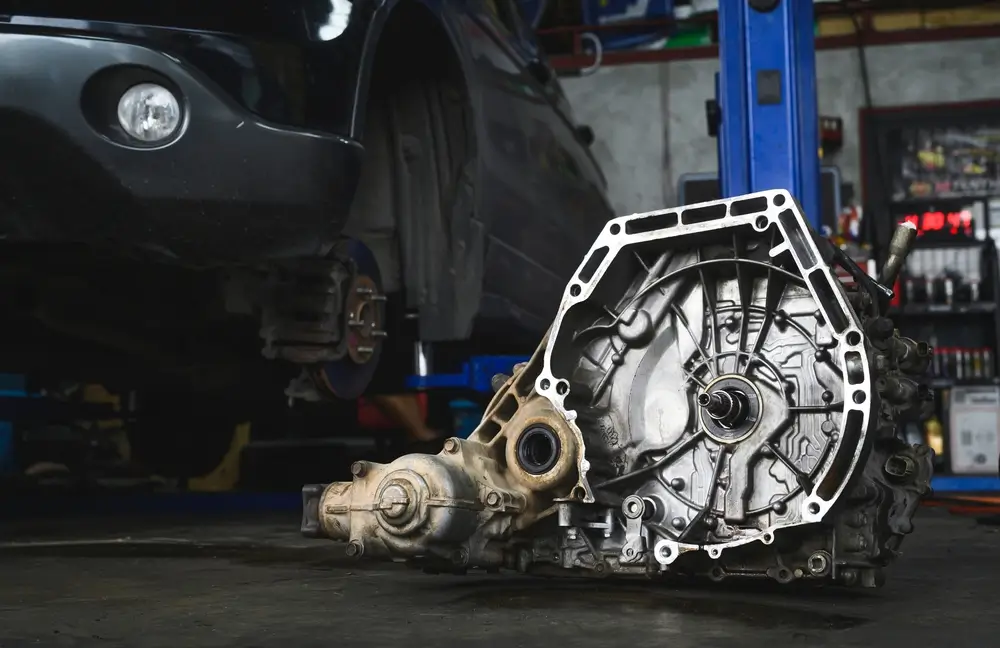Ever wondered what makes your car go forward, backward, or switch gears so smoothly? That’s all thanks to the transmission—a crucial part of your vehicle’s mechanics.
Whether you’re new to driving or just curious about how your car works, understanding the transmission doesn’t have to be complicated.
Think of it as your car’s middleman, ensuring the engine power gets to the wheels efficiently.
Let’s break it down together in this beginner-friendly guide and know what does the transmission do.
What is transmission in a car?
The transmission in a car is a vital component that ensures the engine’s power is delivered to the wheels in a controlled and efficient manner. It adjusts the speed and torque of the vehicle, enabling smooth acceleration, deceleration, and gear shifting. Without a transmission, your engine’s power wouldn’t effectively translate into movement, leaving your car unable to perform as intended. Essentially, the transmission is the bridge between your engine and your wheels.

Manual vs. Automatic Transmission
Manual and automatic transmissions serve the same purpose but operate differently. A manual transmission requires the driver to engage a clutch and shift gears manually, giving them more control over the vehicle’s performance. On the other hand, an automatic transmission handles gear shifting for you, offering convenience and ease of use, especially in stop-and-go traffic. While manual transmissions are often favored for their simplicity and lower maintenance costs, automatics are the go-to choice for a smoother and more user-friendly driving experience.
How Does a Car Transmission Work?
An automotive transmission works by transferring power from the engine to the wheels via a system of gears. When you accelerate, the transmission adjusts the gear ratio to balance speed and torque, ensuring optimal performance. In manual transmissions, the driver selects gears using the clutch and gear stick, while automatic transmissions rely on hydraulic systems, sensors, and a torque converter to shift gears seamlessly. This complex yet efficient system keeps your car running smoothly under various driving conditions.
Other Types of Transmissions
While manual and automatic transmissions are the most common, there are other innovative types designed for specific needs and modern driving experiences. These include the Continuously Variable Transmission (CVT), Dual Clutch Transmission (DCT), and Electric Vehicle Transmission, each offering unique benefits and functionality.
Let’s explore these options in more detail.
Continuously Variable Transmission
The Continuously Variable Transmission (CVT) uses a belt-and-pulley system instead of traditional gears, providing seamless transitions between gear ratios. This design allows the engine to operate at its most efficient RPM, improving fuel economy and offering a smoother ride. CVTs are popular in smaller cars and hybrids thanks to their simplicity and focus on efficiency over performance.
Dual Clutch Transmission
A Dual Clutch Transmission (DCT) operates like a hybrid between manual and automatic systems, using two clutches to pre-select gears for lightning-fast shifts. This setup delivers the performance and efficiency of a manual transmission with the ease of an automatic. DCTs are often found in performance vehicles, offering drivers precise control and a sporty driving experience.
Electric Vehicle Transmission
Electric Vehicle (EV) transmissions are typically simpler than traditional systems, often featuring a single-speed gearbox due to the electric motor’s wide torque range. This design eliminates the need for multiple gears, resulting in fewer components and reduced maintenance. EV transmissions focus on efficiency and smooth operation, perfectly complementing the quiet and innovative nature of electric vehicles.
What Causes Transmission Failure?

Engine and transmission system failure can be caused by various factors, many of which stem from neglect or improper use. Understanding these common causes can help you prevent costly repairs and extend the life of your transmission.
Below are the key reasons transmissions fail:
- Lack of regular maintenance – Skipping routine check-ups can lead to undetected issues that worsen over time.
- Low or contaminated transmission fluid – Insufficient or dirty fluid reduces lubrication, causing overheating and damage.
- Overheating – Excessive heat can break down fluid and components, leading to severe transmission issues.
- Wear and tear of transmission components – Over time, gears, bearings, and seals can wear out, affecting performance.
- Clutch problems in manual transmissions – A worn or faulty clutch can cause difficulty shifting and gear slippage.
- Faulty torque converter – Malfunctions in the torque converter can prevent the transmission from working efficiently.
- Damaged or worn-out transmission bands – Transmission bands that are stretched or broken can cause slipping and poor gear engagement.
- Solenoid failure – A faulty solenoid can disrupt fluid flow, leading to gear issues.
- Fluid leaks – Leaks reduce fluid levels, causing overheating and reduced transmission efficiency.
- Driving habits, such as aggressive shifting – Hard shifts and poor driving practices can strain the transmission.
- Heavy towing or overloading – Excessive weight can overwork and damage the transmission.
- Software or electronic malfunctions in modern vehicles – Faulty software or sensors can disrupt the transmission’s performance in modern cars.
What Happens When the Transmission Goes Bad?
A failing transmission can lead to several warning signs that impact your vehicle’s performance and safety. Recognizing these symptoms early can help prevent further damage and costly repairs.
Here are the common signs of a bad transmission:
- Difficulty shifting gears – Trouble moving the gear lever or rough transitions between gears.
- Unusual noises (clunking, grinding, or whining) – Strange sounds can indicate internal issues within the transmission.
- Slipping gears – The vehicle unexpectedly changes gears, leading to inconsistent power delivery.
- Delayed or unresponsive gear shifts – Hesitation when shifting gears or no response when engaging drive or reverse.
- Leaking transmission fluid – Fluid pooling under your car is a clear sign of a leak.
- Burning smell – Overheated fluid creates a distinct, sharp odor, signaling trouble.
- Transmission warning light on the dashboard – A dashboard alert can indicate a detected problem in the system.
- Reduced acceleration or power – Loss of power when accelerating due to transmission inefficiency.
- Vibrations or shuddering – Noticeable shaking while driving, particularly when changing gears.
- Complete loss of vehicle movement – Severe transmission failure can render the vehicle immobile.
FAQs
Understanding your car’s transmission can help you make better decisions about maintenance and repair. Below are answers to some of the most common questions about car transmissions.
Does the Transmission Affect the Engine?
Yes, the transmission directly impacts the engine’s performance. It controls how power is transferred from the engine to the wheels, ensuring optimal speed and torque. A failing transmission can strain the engine, leading to reduced efficiency, overheating, and potential damage.
Can a Vehicle Run Without a Transmission?
No, a vehicle cannot function without a transmission. The transmission is essential for converting engine power into movement by managing speed and torque. Without it, the engine’s power cannot be properly utilized, leaving the car immobile.
What Happens If You Don’t Fix a Bad Transmission?
Ignoring a bad transmission can lead to worsening damage, higher repair costs, and complete vehicle breakdown. It may also put you at risk for accidents due to unreliable performance. Addressing transmission issues promptly is crucial for safety and long-term vehicle health.
Which Type of Car Transmission Is Best?
The best type of transmission depends on your driving preferences and needs. Manual transmissions offer more control, while automatics provide ease of use. CVTs excel in fuel efficiency, DCTs deliver sporty performance, and single-speed EV transmissions are ideal for electric vehicles.

Choose the Best for Your Transmission Needs
Your car’s transmission is a vital component that ensures smooth and efficient performance, making its proper care and maintenance essential. If you’re dealing with transmission issues or need expert guidance, trust Status Automotive & Collision, the top automotive repair shop in Houston, Texas. Their skilled technicians are equipped to handle all types of transmission repairs and maintenance, ensuring your vehicle runs at its best.
Don’t wait for minor issues to become costly repairs. Visit Status Automotive & Collision today for reliable service and exceptional care. Your car deserves the best!
Call now or book your appointment online to experience Houston’s top-tier automotive repair services.




